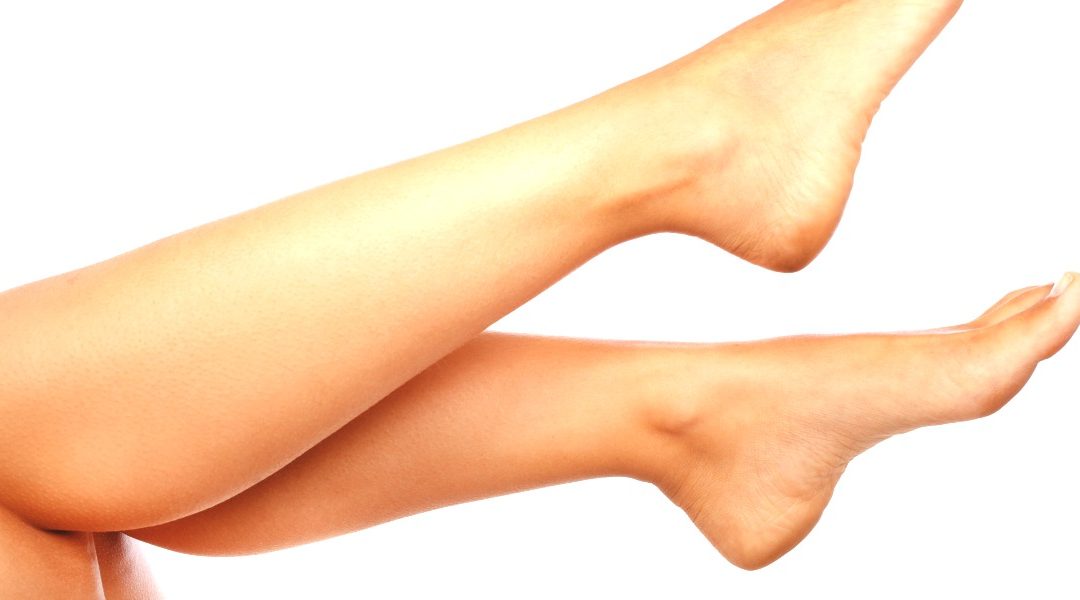Can Lasers Remove Leg Veins?
The answer to this question is both YES and NO. When we are discussing removing leg veins a distinction needs to be made between veins on the surface of the skin (superficial veins) and veins below the surface of the skin (deep veins).
Superficial veins vary in their size, colour and the thickness of the vein wall. The smallest of surface leg veins are called ‘telangiectasia’ and are a bright red colour and have quite thin vessel walls. These types of leg veins can be effectively removed by medical grade vascular lasers with either a Pulse Dye Laser( eg VBeam) or a 532 nm Laser (eg Excel V) being preferred.
As surface veins get larger they become darker in colour to a purple then blue appearance and have thicker walls. These larger surface leg veins are more difficult to remove by Laser as much more heating is required to ‘seal’ off these veins and care needs to be taken not to overheat and burn the surrounding skin. If treating blue/purple surface veins by Laser, then a medical grade YAG laser is preferred, as it has a longer wavelength which allows the laser light to penetrate deeper below the skin’s surface. When using YAG lasers to treat surface leg veins they need to be used in’ Long Pulse mode’ which means the laser beam needs to be applied for longer to effectively heat the veins.
Further restricting the effectiveness of Lasers in treating surface veins is that small veins are typically associated with larger feeding veins. These feeder veins push blood into the smaller veins and also need to be treated for the best long term results. The larger feeder veins are best treated by surface injections (sclerotherapy). Sclerotherapy can also be used for treating many of the small veins and for experienced injectors nearly all surface leg veins can be treated by Sclerotherapy alone.
It may be that in some situations a combination approach of both sclerotherapy followed by Laser is necessary for optimal results. This is a good reason to have leg vein treatments in a medical clinic setting where both sclerotherapy and Laser treatment options are both available.
As a guide, it is difficult to get a good result removing surface leg veins by Laser if the veins are larger than the thickness of a paper clip.
Deeper Varicose veins below the surface of the skin can now be very effectively treated by Laser. These types of deeper varicose veins previously required surgical stripping in hospital and required a number of weeks recovery. Through the use of medical grade Lasers these deep veins can now be treated in the clinic rather than in hospital, without general anaesthetic and normal activity can be resumed immediately.
The Laser treatment of deep veins involves a minor skin incision to allow a small tube (catheter) which contains the laser fibre to be inserted into the deeper vein. Using a special ultrasound the catheter is guided into position and then a Laser is used to precisely deliver heat to the inside of the Varicose Vein. When enough heat is delivered the vein wall collapses and the vein is closed off. Once the vein is closed off then blood flow naturally becomes redirected through other healthy veins.
The procedure was first called Endovenous Laser Treatment (EVLT) and has been performed in Australia since 2002. The treatment has been improved and refined such that now the type of Laser used (usually a 980nm Diode or 1320nm YAG) targets the vein wall more effectively resulting in excellent long term results with fewer complications than from surgery.
So in summary, for treating large deep leg veins Laser treatment is a very effective option whilst for small superficial leg veins Laser treatment is only indicated in limited situations.
